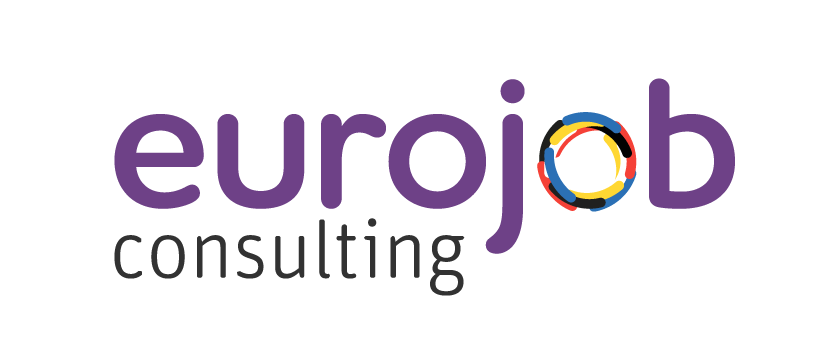How to attract passive candidates in Germany when LinkedIn isn’t enough

When it comes to recruiting in Germany, LinkedIn alone won’t cut it. With only 18% of candidates actively looking for a job, passive talent has become an essential, untapped resource for companies in need of skilled professionals. However, attracting these passive candidates requires a targeted, multi-channel approach. How can you reach and engage these high-value professionals when traditional methods fall short? Discover key strategies to capture passive talent and build a more robust recruitment pipeline in Germany.
2. Why LinkedIn Alone Won’t Help You Source Passive Candidates in Germany
3. Short-Term Solutions to Reach Passive Candidates in Germany
4. Long-Term Strategies to Build a Pool of Passive Talent
5. Personalizing Your Approach to Attract Passive Talent

" Passive candidates are those who are not actively seeking a new position but may be open to attractive opportunities."
Lea Orellana-Negrin
Recruiter
Eurojob-Consulting

According to a YouGov study, only 18% of professionals are actively job hunting, meaning passive candidates represent a highly valuable talent pool for recruiters. Passive candidates tend to be skilled and established in their roles, making them ideal targets for companies looking to attract talent with specific expertise and long-term commitment.
There are several types of passive candidates:
- Open passives: Not actively looking but open to new opportunities.
- Passive onlookers: Staying updated on the market but without intention to change jobs.
- Semi-active passives: Not actively seeking new roles but open to discussing potential opportunities within their network.
- Unavailable passives: Disinterested in new roles unless offered an exceptional opportunity.
These candidates tend to be more engaged and committed when recruited, as they are often drawn to the company’s vision rather than a pressing need for employment. Reaching these candidates requires innovative sourcing methods and offering them compelling incentives that align with their career aspirations.
Although LinkedIn is widely recognized as the go-to tool for professional recruitment, it does not fully encompass all profiles and sectors in Germany. Many technical fields such as engineering, construction, and hospitality are underrepresented on LinkedIn, meaning recruiters may miss out on valuable talent pools if relying solely on the platform.
Additionally, LinkedIn’s popularity among recruiters results in high competition, which can reduce the effectiveness of approaching passive talent. According to LinkedIn data, most active users come from HR, venture capital, and consulting sectors, which don’t always align with the specific demands of industrial or technical roles.
Some limitations of LinkedIn include:
- Users average only 17 minutes per month on the platform, limiting engagement opportunities.
- A large proportion of LinkedIn users are younger than 34, excluding many seasoned professionals.
To effectively attract passive candidates in Germany, companies must adopt a diversified recruitment strategy that includes alternative social media channels and referral programs.
When immediate hiring needs arise, leveraging a mix of platforms is essential. In addition to LinkedIn, personal social media channels such as Facebook, Instagram, and Twitter can be effective, particularly for candidates who aren’t represented on LinkedIn. A CleverConnect study found that candidates without a bachelor’s degree are 2.5 times more likely to respond to recruiter outreach on private social networks.
Referral programs are another powerful way to reach high-quality candidates. Statistics show that 1 in 10 referred candidates is hired, compared to only 1 in 100 from job boards. Referred employees also tend to show higher long-term commitment, which reduces hiring frequency and strengthens company culture over time. To maximize results, companies should consider digitalizing the referral process and incentivizing employees to share job openings and company news with their networks.

Building a sustainable talent pool requires a mix of nurturing and recruitment marketing techniques. This approach allows recruiters to establish long-term relationships with passive candidates who may consider future roles. By using a CRM (Candidate Relationship Management) tool, recruiters can organize and personalize interactions, ensuring they stay relevant and top-of-mind for passive candidates.
A successful nurturing strategy might include:
- Regular updates on company projects.
- Insightful content, such as team testimonials and video stories, to build interest.
- Invitations to open houses or networking events.
Passive candidates appreciate consistent engagement; studies show that 82% of professionals prefer to receive regular updates from recruiters after initial contact. By planning personalized campaigns, companies can build valuable connections that will ultimately yield high-quality candidates.
Convincing passive candidates to join your team requires a tailored approach with offers that align with their career goals. Passive candidates are drawn to companies that understand their professional aspirations and values, especially when presented in a genuine, personalized way.
Successful outreach to passive candidates could include:
- Individualized messaging: Recognize the uniqueness of each candidate rather than using a generic approach.
- Clear, appealing incentives: Highlight aspects of your company that would directly appeal to the candidate’s values.
- Prompt follow-up: Once passive talent shows interest, respond quickly to keep them engaged.
Using diverse formats like videos, podcasts, and testimonials can capture attention more effectively than standard messaging alone. For example, Bonanza provides tools that automate personalized candidate interactions, saving time while building a foundation of trust.
In the face of talent shortages in Germany, recruiting requires a 360° sourcing strategy that combines various channels and personalized outreach methods. By leveraging CRM systems and digital referral programs, companies can create lasting pools of talent that go beyond traditional platforms like LinkedIn, leading to a more resilient and sustainable recruitment strategy.
For more great tips :
- Recruiting in Germany: The Art of Effective Follow-Ups Without Harassment
- HR Trends: Discover the German Employment Barometer by Eurojob Consulting
- The importance of a talent pool for recruiting in France and Germany





